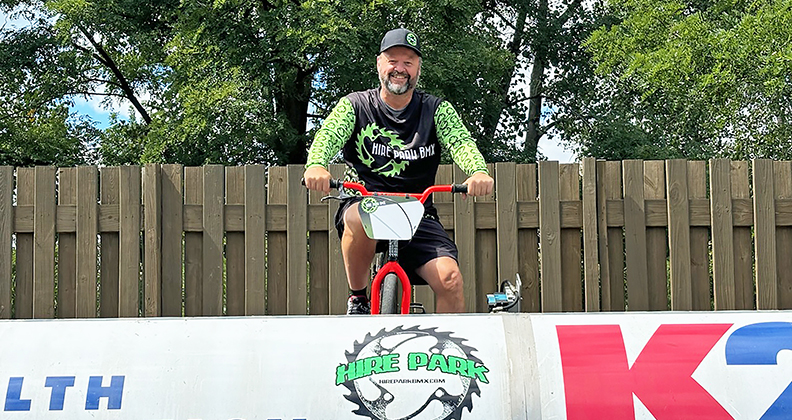
Dan Rumple is quick to point out that he’s never been an armchair quarterback. His younger years were spent on football fields and basketball courts while pursuing his love of BMX racing. Life far from the sidelines wore down his knees, resulted in torn ACLs and eventually led him to undergo bilateral knee replacement surgery at age 49. Rumple’s expertise in CAD technology and orthopedic product engineering provided him with the unique experience of designing his own knee implant. Rumple, who is a literal example of personalized patient care, discussed how happy he is to be back on his bike and why his current role as a Design Engineer at OrthoPediatrics fulfills another of his life’s passions.
What was your contribution to the development of the ATTUNE Cementless Knee System?
I was part of the design team at DePuy Synthes. We knew which features we wanted to improve and what we wanted to keep from other systems. From there, we created the primary design, developed the prototypes and eventually moved into the cementless application, which is where I focused my efforts. I’m a CAD guy, so I developed the 3D geometry. I collaborated with scientists and different teams in the lab to figure out the kinematics and determine what works and what doesn’t. We put our own spins on things but at the end of the day it was about tying the design elements together to make sure the femoral component worked with the insert, and that the insert worked with the tray.
At what point did you realize that you’d benefit from your design work?
My knees were in rough shape, and once we got through the primary design phase and revision work, I decided, ‘Yes, this is going to be for me.’ I had my first consultation with the surgeon who performed my surgery as we were testing the ATTUNE system in a cadaver lab. I was among the first 20 patients to receive the implant. I knew the science behind it and was familiar with the people who developed it — heck, I was one of them. I knew exactly what I was getting.
Did that change your approach to the project?
My colleagues were probably annoyed with me because I started asking a lot of questions in design meetings. I wanted to learn about the whys behind their decisions and know as much as I could about how the implant would function. After talking to various engineers and marketing reps, I knew that cementless implantation was for me. It avoids cement breakdown as you age, and you benefit from bony ingrowth.
How good of a design job did you do?
(Laughs) It’s been seven years since my surgery. My knees feel great and the implants are performing well, despite my best efforts to wear them out. I play basketball with my buddies and run a BMX facility in Warsaw. That’s my happy place. Although I’m no longer racing competitively, I rip around the track on occasion. My activity level is still on point, and I have no plans to slow down.
You’re now a design engineer at OrthoPediatrics. What’s different about creating devices for kids?
It presents different challenges. You need to consider the growth plate and the fact that their bones are constantly changing as they get older. Implants are designed to be removed — we’re designing devices that can be taken out rather than press-fitted like adult implants. You also need to make sure that the material will stand up to the abuse active kids will give it. Innovations that allow for better implant alignment, quicker procedures and easier removal are particularly exciting in the field of pediatrics. I’m proud to have been part of the team that designed the ATTUNE knee, but working on devices that help kids is more fulfilling than I can put into words.
DC
Dan Cook is a Senior Editor at ORTHOWORLD. He develops content focused on important industry trends, top thought leaders and innovative technologies.




